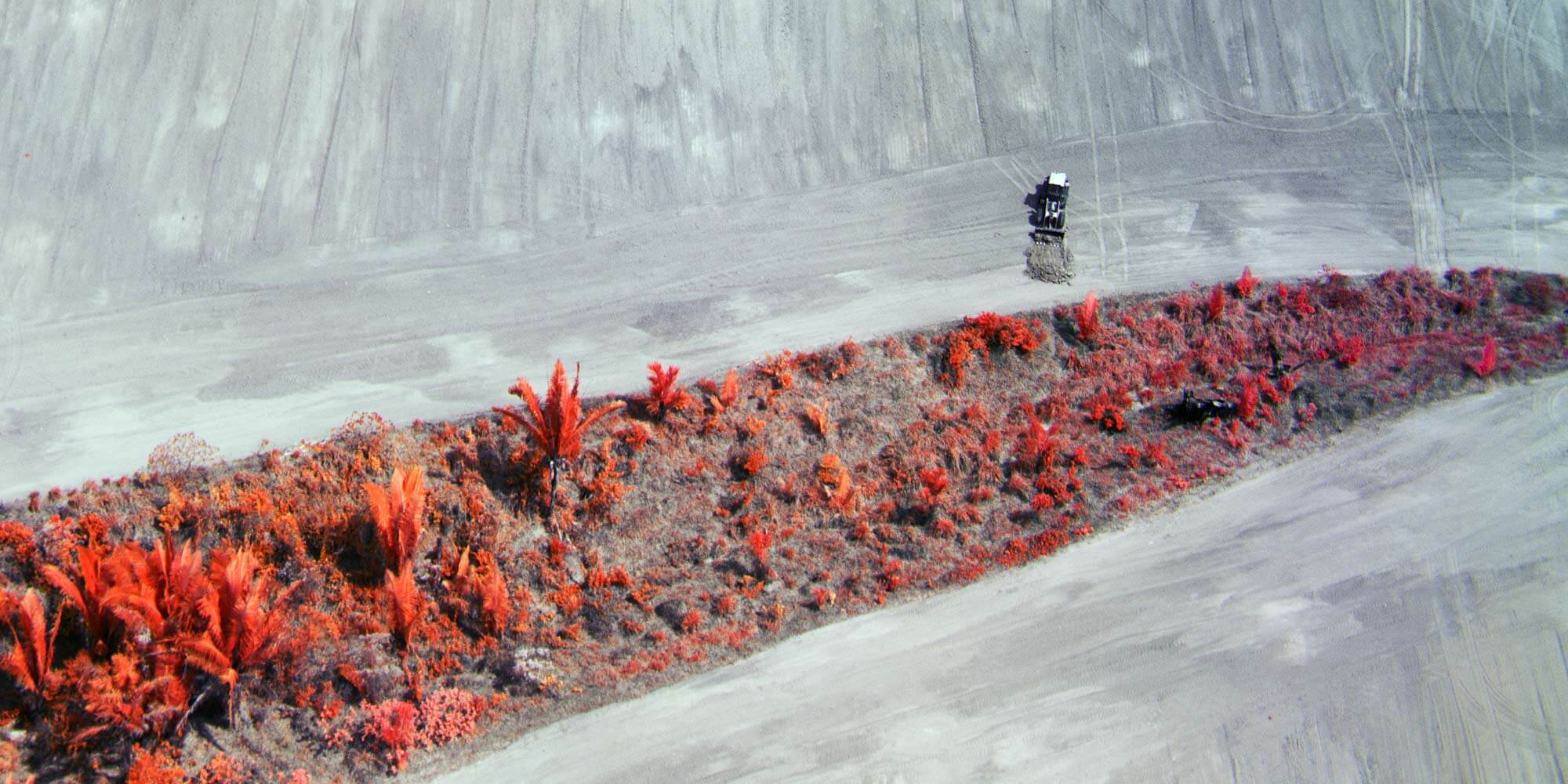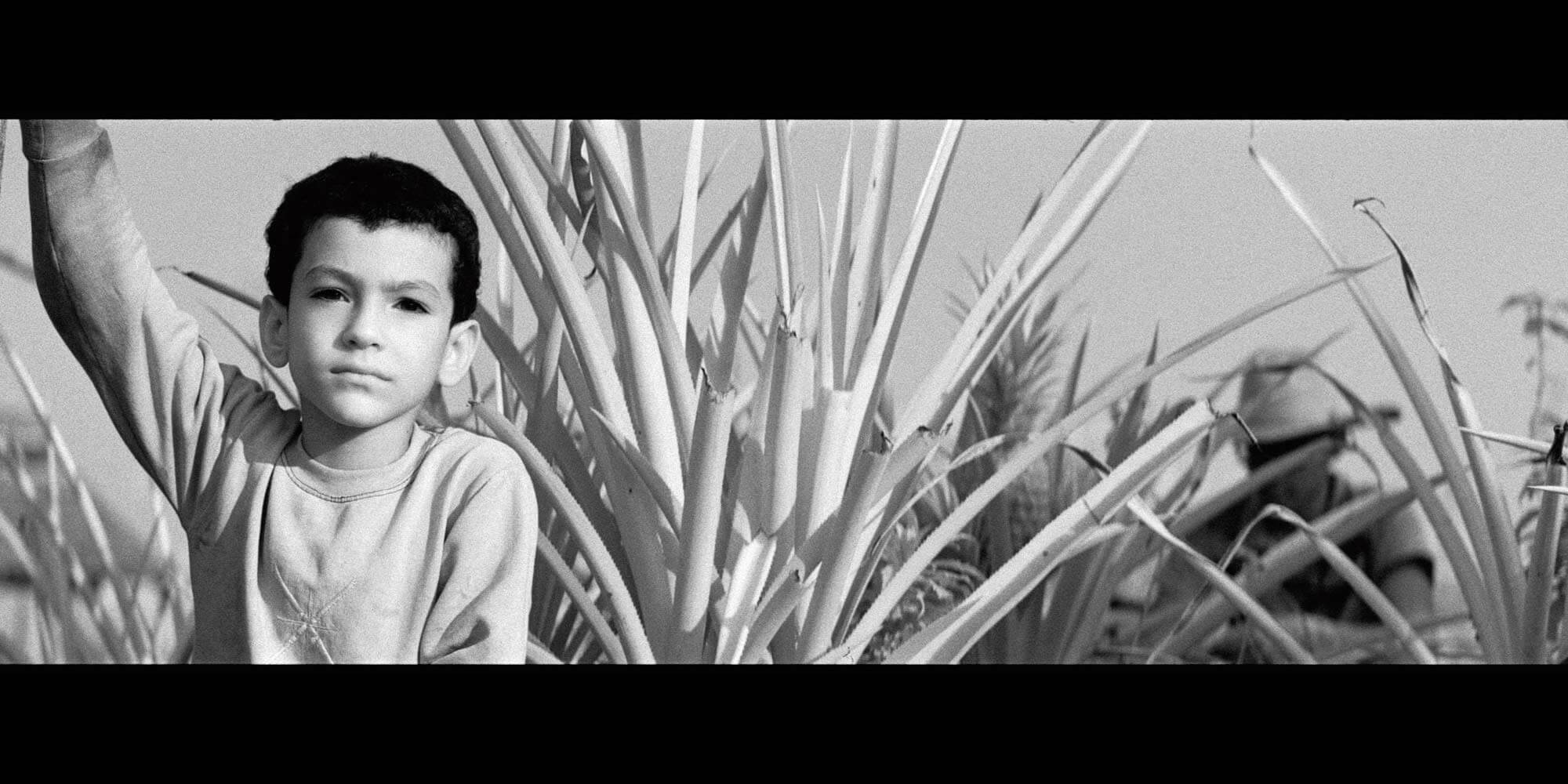Grand Prize – Innovative Collaboration
Broken Spectre (2022) is a disquieting portrait of willful environmental catastrophe along the Trans-Amazonian Highway told through a kaleidoscope of scientific, cultural, historic, socio-political, activist, and anthropological filters. This dream-like immersive video forms an extensive record of widespread yet unseen fronts of deforestation and industrialized ecocide in the Amazon Basin, unveiled using a range of powerful scientific imaging technologies, at the tipping point of this crucial ecosystem’s erasure.
Through abrupt leaps in scale and medium, the film reveals unsustainable processes of extractive violence: illegal logging, mass burning, wildcat goldmining, the theft of Indigenous lands, species extinction, flooding and damming of rivers, and the forest’s colonization for encroaching monoculture plantations and vast intensive cattle farms.

For decades, scientists have harnessed advanced forms of remote sensing photography to understand the forest’s degradation, model tipping points, and reveal impending environmental catastrophe underway in the Amazon. Broken Spectre is an attempt to dial in on these opaque subjects using similar scientific imaging technologies, aggravated media that carry some agency in the biome’s destruction, as they are also used as tools of resource extraction by mining and agribusiness interests.

As in past projects, the media Mosse uses to tell these stories is encoded with complex, invisible layers of the systems involved, on international, governmental, and local levels. He employs them to make a dystopian Western, because the fraught iconography of the Western film carries uncanny echoes of the reality encountered in the field—a natural paradise and its Indigenous populations being colonized by pioneer settlers with the righteous zeal of Manifest Destiny and a distinct form of cowboy culture.

The film was made with an inclusive and collaborative approach, including key scenes made in collaboration with the Yanomami and Munduruku communities, the ATL (Acampamento Terra Livre) Conference, and additional guidance and collaboration from the Suruí, Kaingang, and other Indigenous communities.
Three separate media were employed to capture aspects of the Amazon rainforest, each at a particular scale. To capture the systematic organization and massive scale of the burning forest, an aerial multispectral camera was invented in collaboration with a spectroscopy and machine vision company. This is the world’s first multispectral camera for Geographic Information Systems (GIS) purposes that can capture video footage at 24 frames per second or more. This camera involves a series of beam splitters to refract the light towards four separate monochrome digital sensors, each of which with its own filter, passing a very specific narrowband (10 nanometers) of light at certain points of the electromagnetic spectrum. Attached to the nose of a helicopter and flown over sites of environmental crimes, these scenes indexically reveal health or degradation to the foliage of the rainforest’s biomass, doing so in disarmingly aesthetic and expressive registers.

For the close-up scenes shot on the floor of the cloud forest at night using ultraviolet lights, the film borrows scientific techniques of UV microscopy to produce reflective and fluorescent ultraviolet macro timelapse footage of the forest’s biome. Each frame took an average of three seconds to capture, using probe lenses to carefully examine only a couple of square centimeters of the forest biome.
At the scale of the human figure, in scenes depicting the processes of environmental crimes, analogue motion picture S35mm B&W infrared film was shot using x2 anamorphic lenses. Aside from scenes in the seminal 1964 film Soy Cuba, this is perhaps the only use of infrared film in the history of cinema. The film registers infrared at or above 720nm, so its glowing white highlights depict intense amounts of chlorophyll in the rainforest, which reflects infrared light. Like the other media involved, this approach is able to represent these fronts of deforestation and environmental crimes on both indexical (scientific) and aesthetic registers. Mosse regards this overlap as a fertile space for a film about environmental destruction, because the camera can measure the extent of forest degradation and dieback.
Credits
Director, producer: Richard Mosse
Cinematographer, editor: Trevor Tweeten
Composer, sound design: Ben Frost
Digital colorist, post-production: Jerome Thelia
Film processing and studio manager: Matthew Warren
Film processing advisor: Cary Kung
Film processing assistant: Kimin Kim
Film scanning: Metropolis Film Lab
Fixer, translator, driver: Gabriel Uchida
Fixer, translator, driver: Alessandro Falco
Fixer, translator, driver: Marco Lima
Fixer, translator: Gabriel Bogossian
Fixer, translator: Alejandro del Solar Bravo
Production assistant: Diana Morales Ocegueda
Driver: Edimar Tozzo
Helicopter: Aereo Especial
Multispectral camera engineer: Jeffrey Carson, Spectral Devices
35mm camera rental: Hand Held Films
Sound engineer: Mike Amacio, Carlos Boix
Advisor: Jon Lee Anderson
Cloud forest guides: Alex Guevara, Arlette Arn
Yanomama translator: Ana Maria Antunes Machado
Broken Spectre was co-commissioned by the National Gallery of Victoria, VIA Art Fund, the Westridge Foundation, and the Serpentine Galleries. Additional support was provided by Collection SVPL, Jack Shainman Gallery, and Arts at CERN.
Biography
Richard Mosse (b. 1980, Ireland; based in New York) has consistently documented historically significant subjects using photographic media that foreground elements of these narratives. Mosse seeks to heighten and extend the language of documentary photography to draw attention to overlooked yet urgent conflicts, often with a critical emphasis on the limitations of photojournalism, an activist’s sense of purpose, and a belief in the power of aesthetics to communicate, creating immersive and groundbreaking new forms in documentary photography and the moving image. He was awarded the Prix Pictet (2017), the Deutsche Börse Photography Prize (2014), and a Guggenheim Fellowship (2011). His work has been exhibited at the Akademie der Künste, Barbican Art Gallery, Hamburger Kunsthalle, Hayward Gallery, Louisiana Museum, National Gallery of Art, National Gallery of Victoria, SFMOMA, and he represented Ireland at the 55th Venice Biennale.
Jury Statement
The deforestation of the Amazon is the global symbol of 21st century of the erasure of ecosystems and its seemingly ever increasing speed—a bleak indication of the human-made roots for the world failing to fulfil the Paris Agreement by limiting global warming to below 1.5 °C. While this is common knowledge today, there is no common action or change taking place. What is needed to save the Amazon and to save the world? More research? More data? More reports? More warnings? What do we as a global collective need to see to implement change? We all feel the need for a new way of seeing, viewing, and then acting upon environmental catastrophes: Broken Spectre offers an opportunity for each and everyone to see with refreshed eyes, and to understand with perspectives shifted and with novel layers of previously hidden dimensions of the Amazon deforestation. Richard Mosse’s creation is as much an artwork as a technological masterpiece, almost like a film. He calls it a ”dreamlike immersive video artwork … using powerful scientific technologies.“
The jury sees Broken Spectre as a role model for the societal potential of unforeseen collaborations between art and science. It raises the relevance of art and of science into a dimension that could not be reached by either art or science alone.
Mosse’s work is highly innovative in many ways: using the world’s first multispectral camera for Geographic Information Systems (GIS) to shoot using S35mm B&W infrared film, using x2 anamorphic lenses, films that no film lab would process. He created a film lab in the process of making Broken Spectre, and he broke the boundaries of disciplines and technologies to show the breakdown of the Amazon and our global ecosystem. Finally he worked with photographic technologies based on the European Space Agency’s Sentinel 2 multispectral remote sensing program.
All these innovative collaborations facilitate the communication of a new experience, a novel force that touches the viewers’ minds and senses, conveying knowledge and emotion—a compelling revelation of the ”extractive violence“ as Mosse states.The jury sees Broken Spectre as an innovative collaboration not just of art and technology, but a collaboration of innovators that push the boundaries and home turf of their various disciplines to show the world something new and previously unseen. It also made us rethink the purpose of collaboration by actively involving citizens and indigenous communities to participate in the capture and production of this evidence together with the artists. Broken Spectre is a must-see and will hopefully inspire others to not just experiment with technologies, but to shift the ways of thinking about them, to activate in novel and daring ways for a greater global good.



